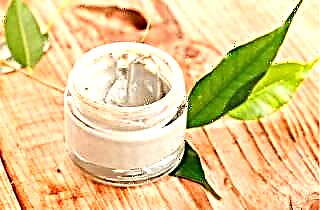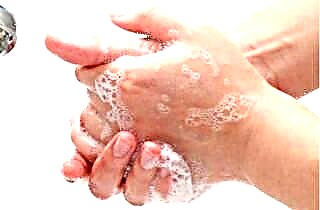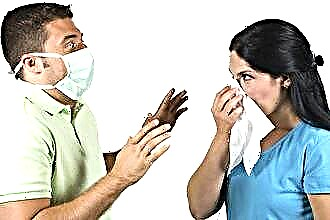Snot in a child is so commonplace that many mothers do not pay attention to them. They appear and pass along with changes in weather conditions, when exposed to external stimuli, in other situations. And where there is snot, there is irritation of the delicate skin around the nose, redness, and the formation of crusts. Therefore, mothers are in no hurry to see a doctor, although this is how Staphylococcus aureus can manifest itself in a child's nose at an early stage of the disease.
Reasons for the appearance
 To understand the causes of staphylococcus aureus in a child, it is useful to know what Staphylococcus aureus is. This is a gram-positive bacterium, which, when examined by a microscope, is small spheres of a characteristic golden color (hence the name). For an adult, it does not pose a great danger, since it is suppressed by immune cells. And children still do not have sufficiently strong immunity, therefore, bacteria multiply rapidly on their mucous membranes and can provoke various diseases.
To understand the causes of staphylococcus aureus in a child, it is useful to know what Staphylococcus aureus is. This is a gram-positive bacterium, which, when examined by a microscope, is small spheres of a characteristic golden color (hence the name). For an adult, it does not pose a great danger, since it is suppressed by immune cells. And children still do not have sufficiently strong immunity, therefore, bacteria multiply rapidly on their mucous membranes and can provoke various diseases.
More often, a child becomes infected with staphylococcus in children's or medical institutions. Up to 20% of infants catch it while still in the maternity hospital. And by the age of 5, about 50% of children become carriers of the bacteria.
This is due to the amazing vitality of this microorganism. It does not die when treating surfaces with alcohol and hydrogen peroxide, can survive in direct sunlight, and is resistant to many types of antibacterial drugs
Strong immunity is able to inhibit the development and reproduction of bacteria for a long time. As soon as the body's defenses fall, staphylococcus begins to multiply actively, which leads to the manifestation of external symptoms. If untreated, it quickly spreads through the skin and mucous membranes, and can also be transferred with blood and lymph to other internal organs.
Infection routes
Although Staphylococcus aureus is not transmitted through the air, it is quite possible to become infected with it when the saliva of a sick person gets on the skin or into the respiratory tract of a healthy person. Therefore, children can easily get this bacterium from a parent or close relative by kissing, coughing or sneezing in the immediate vicinity of the child.
Also, Staphylococcus aureus can enter the baby's body:
- in the womb (some strains are able to cross the placental barrier);
- when passing through the birth canal (contact with infected mucus);
- when breastfeeding (from the surface of the skin or with blood from cracks in the nipples);
- with food (stale or contaminated);
- during various medical procedures (in violation of sterility).
Therefore, when Staphylococcus aureus is diagnosed in a child in a family, all other family members undergo a mandatory examination. Otherwise, the treatment will not work, as there will be a constant re-infection from each other. And the bacterium itself will only acquire resistance to the drugs used.
The main symptoms
The first symptoms of Staphylococcus aureus in the nose are very easy to confuse with acute respiratory viral infections or colds, and therefore this disease is usually not detected in children immediately. But as the pathogenic bacteria multiply, the number of symptoms begins to grow steadily:
- profuse mucous discharge from the nose;
- severe itching and redness of the skin, mucous membranes;
- fluid-filled blisters that look like herpes;
- severe weakness, signs of general intoxication;
 an increase in body temperature, persistent or intermittent;
an increase in body temperature, persistent or intermittent;- difficulty breathing, a feeling of nasal congestion;
- the formation of wet or dry crusts in the nasal passages;
- inflammation and enlargement of the adenoids and tonsils.
If untreated, the disease affects the mucous membranes of the nasopharynx and throat, which provokes pain when swallowing, perspiration, and cough. Penetrating into the nasal sinuses, staphylococcus becomes the cause of sinusitis, sinusitis, frontal sinusitis. If it enters the middle ear (from the nasopharynx through the Eustachian tube), purulent otitis media may develop.
When Staphylococcus aureus enters the gastrointestinal tract with saliva or mucus, it can cause malfunction and inflammation of internal organs: colitis, gastritis, duodenitis, stomatitis, cystitis, etc. In severe cases, the infection penetrates the head and heart, provoking meningitis and endocarditis ... Therefore, treatment should be started as early as possible.
It is possible to identify the presence of Staphylococcus aureus in the body using diagnostic laboratory tests. The easiest way is to do a bacterial culture of mucus from the nose and an analysis of feces for dysbiosis. At the same time, in laboratory conditions, it is possible to find out the sensitivity of the strain present in the body to various types of drugs. Then it will be easier for the doctor to choose the most effective course of treatment.
Traditional treatment
The main thing to remember is that there is no self-prescribing antibiotics! Adults must also be careful with this type of drugs, and their improper use can cause serious harm to the baby's body. So, drugs of the penicillin series will not only not destroy staphylococcus, but also greatly weaken the immune system. This can cause the development of meningitis, endocarditis, pneumonia, sepsis.
 Therefore, sulfonamides or complex antibiotics of a wide spectrum of action are usually used to treat Staphylococcus aureus in a child: Amoxiclav, Ceftriaxone, Norfloxacin, Oxacillin. However, the final decision on the need and dosage of the drug in each case is made only by the attending physician. The standard course of treatment is 2 to 3 weeks.
Therefore, sulfonamides or complex antibiotics of a wide spectrum of action are usually used to treat Staphylococcus aureus in a child: Amoxiclav, Ceftriaxone, Norfloxacin, Oxacillin. However, the final decision on the need and dosage of the drug in each case is made only by the attending physician. The standard course of treatment is 2 to 3 weeks.
To prevent possible allergic reactions to antibiotics, antihistamines are prescribed in parallel. They also reduce the amount of mucous secretions, relieve nasal swelling, and soothe itching. For the speedy healing of the wound and ulcer, it is necessary to lubricate with a solution of brilliant green several times a day.
To maintain the body and increase the protective forces, immunomodulators "Immunal", IRS-19, etc. will be used. A course of multivitamin therapy will also be useful. Moreover, it is worth taking them, even if the child receives a full and healthy diet, since during this period the body's needs for vitamins and minerals grow.
A good therapeutic effect is provided by the use of a specially created to combat all types of staphylococcus - "Bacteriophage". This is a special liquid in which microorganisms neutralizing staphylococcus are present. It is used for lotions and gauze tampons that are inserted into the nasal passages for 15-20 minutes. Thus, pathogenic microorganisms are simultaneously destroyed from the outside and from the inside.
Folk remedies
It is not recommended to treat Staphylococcus aureus in a child with folk remedies. The wrong methods will delay time and allow the bacteria to spread to other organs and tissues. You can use traditional medicine as an auxiliary. And it is better to do this under the supervision of a doctor so that they do not weaken the effect of drugs.
It makes no sense to treat wounds in the nose with alcohol or peroxide. Staphylococcus aureus does not die from alcohol, and peroxide manages to split and absorb the oxygen atoms released during this. Therefore, the best remedy for their treatment is still proven over the years "brilliant green".
But there are other ways to weaken this bacteria:
- Essential oils. They have antiseptic, anti-inflammatory, antibacterial, wound-healing properties.The best effect is obtained by using: juniper, fir, cedar, eucalyptus, tea tree. It should be applied very carefully with a cotton swab, lubricating the skin around the wound or the resulting crust. Essential oils cannot be applied to the sore and open wound - there will be severe burns and irritation.
 White clay. You can only use pure clay without fragrances and additives. It has powerful anti-inflammatory properties and is excellent at neutralizing toxins. Clay absorbs moisture well, promotes the rapid formation of crusts, and eliminates redness. Apply as an application to the affected skin.
White clay. You can only use pure clay without fragrances and additives. It has powerful anti-inflammatory properties and is excellent at neutralizing toxins. Clay absorbs moisture well, promotes the rapid formation of crusts, and eliminates redness. Apply as an application to the affected skin.- Herbal decoctions. Drinking plenty of fluids promotes the speedy release of the body from toxins that are excreted in a dissolved state. But if you give your child herbal decoctions and teas, you can simultaneously strengthen the immune system and provide an additional portion of vitamins. The most useful are: rosehip broth, linden, raspberry, chamomile tea, corn silk, horsetail, leaves and currant twigs brewed in boiling water. You can add a slice of lemon to your tea, but it is better to refrain from honey for now, as well as from adding sugar.
- Aromatherapy. You can use essential oils to treat Staphylococcus aureus in another way - for inhalation or aromatherapy. Diffused in the air, the essential oils listed above are able to neutralize up to 80% of pathogenic microorganisms, thus preventing their further spread. With steam inhalation with oils dissolved in hot water, they penetrate deep into the respiratory tract, killing staphylococcal bacteria that have got on the mucous membranes of the nasopharynx and larynx.
However, without the use of antibiotics, it will most likely not be possible to completely remove the pathogen from the body. And if the bacteria remain, then at any time with a decrease in immunity, a repeated exacerbation of the disease will occur. And this can go on for a very long time.
Therefore, even if with the help of folk remedies you completely manage to eliminate external symptoms, after recovery, you must pass a second bacterial culture to make sure that Staphylococcus aureus is absent. If it turns out that it was not possible to cope with it, then you will have to seek medical help and undergo a full-fledged high-quality course of treatment. This is the only way to prevent the appearance of complications.
Prevention of infection
No preventive measures can give a complete guarantee that staphylococcus will not penetrate into the child's body. This microorganism is very cunning and tenacious. However, simple preventive measures can significantly reduce the risk of infection:
 to teach the child to wash his hands after the street and after using the toilet;
to teach the child to wash his hands after the street and after using the toilet;- thoroughly wash all vegetables and fruits that you feed your baby with running water; in the hot season - pour boiling water over them;
- a child attending kindergarten should have his own bed, towel, preferably his own dishes;
- during the performance of procedures and other medical procedures, the mother must monitor the observance of the sterility conditions by the health workers;
- if one of the adults in the family is infected with staphylococcus, it is advisable to protect him as much as possible from communication with the child.
And most importantly, remember that staphylococcus aureus is not so terrible for a baby with strong immunity. The maximum that it can cause is a condition similar to a mild cold, a slight runny nose and irritation around the nose. Such symptoms usually go away on their own in just 3-4 days.
Therefore, the best thing to do is to strengthen the child's immunity. This requires regular physical activity, good nutrition, hardening procedures, and the correct daily regimen.

 an increase in body temperature, persistent or intermittent;
an increase in body temperature, persistent or intermittent; White clay. You can only use pure clay without fragrances and additives. It has powerful anti-inflammatory properties and is excellent at neutralizing toxins. Clay absorbs moisture well, promotes the rapid formation of crusts, and eliminates redness. Apply as an application to the affected skin.
White clay. You can only use pure clay without fragrances and additives. It has powerful anti-inflammatory properties and is excellent at neutralizing toxins. Clay absorbs moisture well, promotes the rapid formation of crusts, and eliminates redness. Apply as an application to the affected skin. to teach the child to wash his hands after the street and after using the toilet;
to teach the child to wash his hands after the street and after using the toilet;

